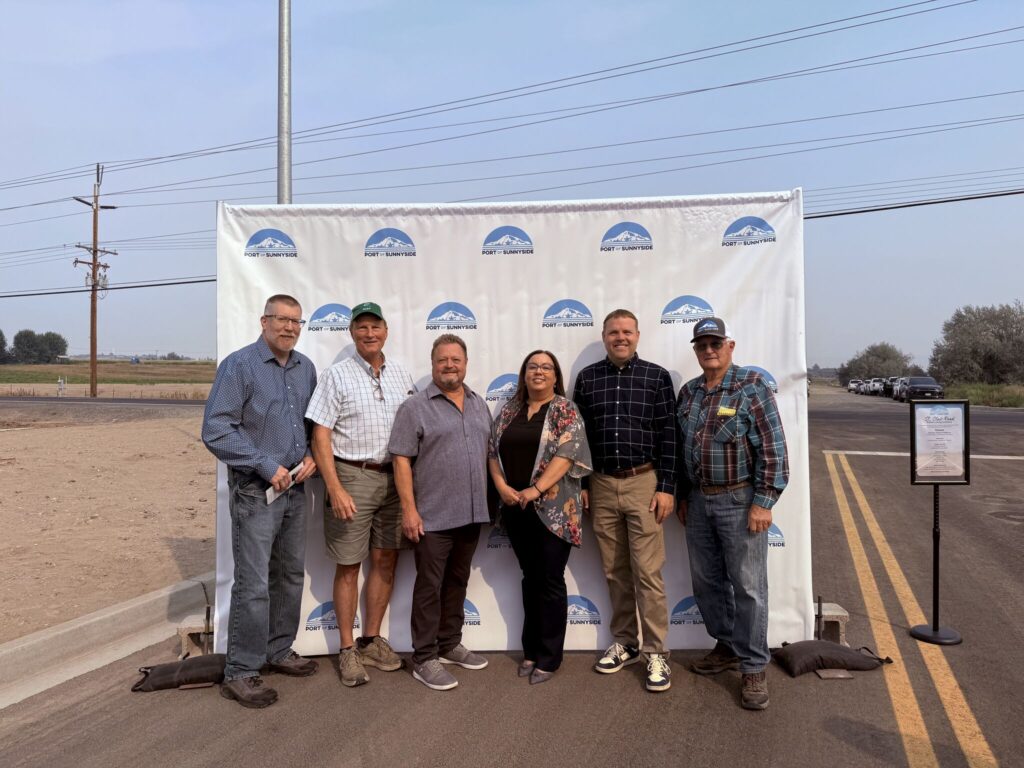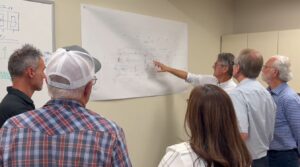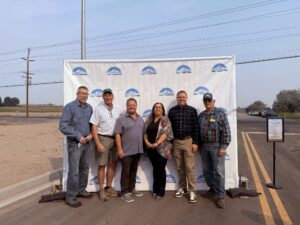When a new business comes to town, the excitement begins long before the doors open. It starts with earthmovers clearing a site and construction crews setting up fences. A contractor’s sign appears, sparking curiosity about what might be coming. Soon, a foundation is poured, walls rise, and the skeleton of a building takes shape. Each stage builds anticipation.
As construction continues, momentum grows. A roof goes on, exterior walls are finished, and then—after months of speculation—the name of the business finally appears on the building. Next, there are job postings in the local paper and online. This brings a quiet but powerful recognition that the community is getting stronger. It’s a place where businesses choose to invest, and where opportunities expand for everyone.
But none of this happens without preparation. Before a single wall can rise, there must be land ready to build on—and that requires infrastructure. Roads, water, sewer, power, natural gas, and rail may not draw crowds or headlines, but without them, there would be no new business development, no new jobs, and no celebration of growth.
That is why the Port of Sunnyside’s recent completion of new infrastructure at its Midvale Industrial Park is such a significant milestone. With new road access, water, sewer, and lift stations now in place, nearly 200 acres of industrial land are ready for development. Businesses considering new facilities don’t have to wait years for basic utilities—the sites are ready to build on.
This work was made possible through a strong partnership between the City of Sunnyside, the Port of Sunnyside, and Yakima County, with critical grant and loan support from the Supporting Investments in Economic Development (SIED) fund, the Community Economic Development Revitalization Board (CERB), and the Washington State Department of Commerce. This collaboration delivered the infrastructure to open new industrial land and clears the way for Pacific Ag Renewables to build its proposed renewable natural gas facility in the park—an early example of the kind of private investment this project was designed to attract.
Readiness like this matters because economic development doesn’t happen overnight. Filling 200 acres will take time. But when companies are searching for a site, their timelines are short—they need to know today that a community has space available tomorrow. By making these investments now, the Port and its partners have positioned Sunnyside to capture growth that might otherwise bypass our region.
The long-term impact will be measured in the jobs created, the private capital invested, and the new industries that choose to call Sunnyside home. Having ready-to-build land ensures that when the right business comes along, the community can say yes—and that ability to say yes is the true value of this investment.
Every time we see dirt moving, a foundation poured, or walls going up, it is proof our community is not standing still—it is moving forward. These projects show that Yakima County is a place worth investing in, a place where businesses want to grow, and a place where families can thrive—thanks to the groundwork being laid today.



